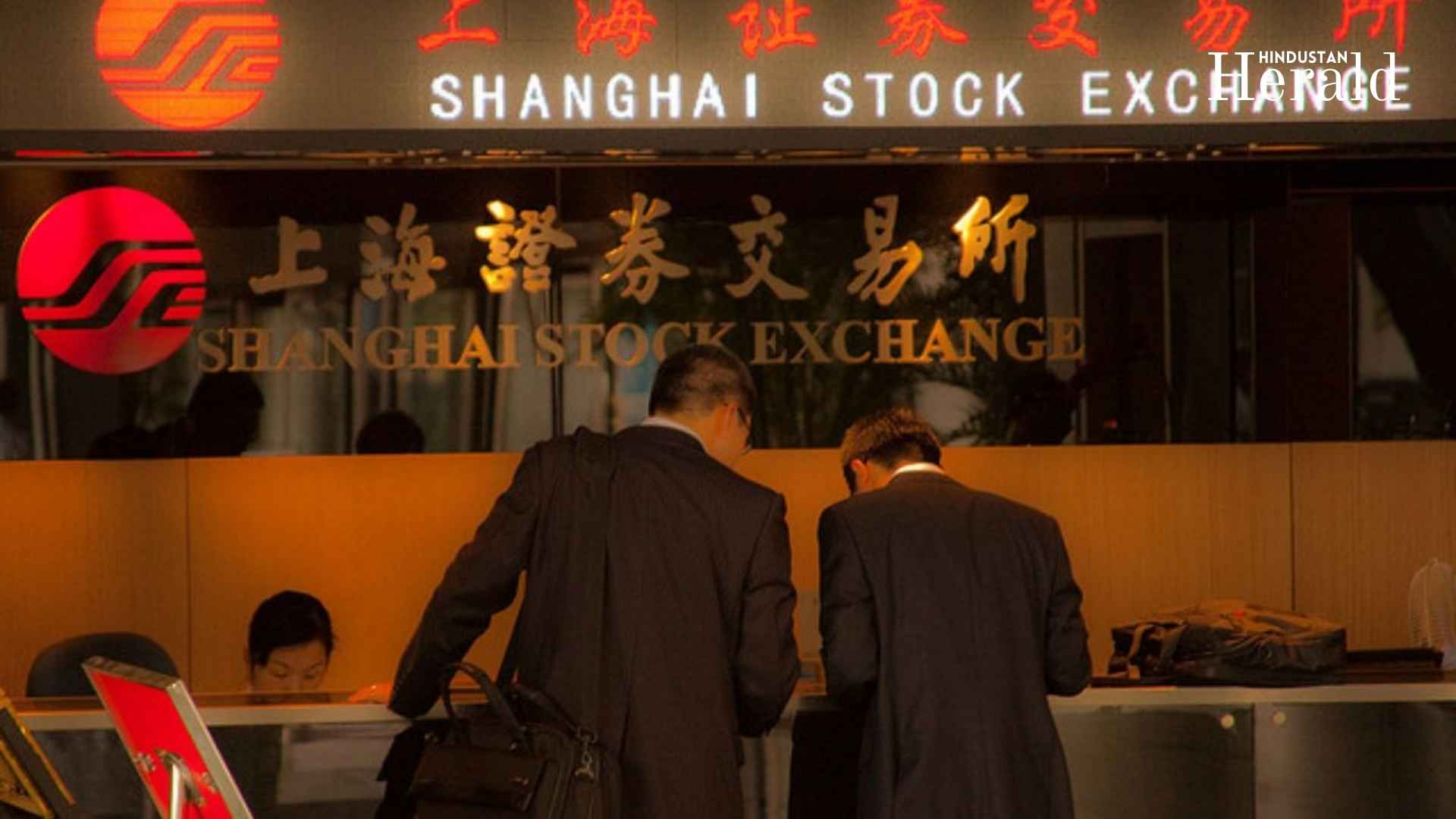Wall Street Suffers Violent Reversal as Trump’s Midnight Tariff Deadline Spooks Investors

Key Highlights:
New York / Washington / New Delhi, April 9, 2025 | War On Tariffs — U.S. financial markets suffered a dramatic whipsaw on Tuesday, swinging from massive early gains to steep closing losses, as investors reacted with alarm to President Donald Trump’s looming 104% tariff on Chinese imports—set to take effect at 12:01 a.m. Wednesday.
The selloff marked one of the most volatile trading sessions in recent years, driven by conflicting hopes of trade negotiations and fears of an imminent economic slowdown.
Markets Open Strong, Close Shaken
- The S&P 500 surged by 4.1% at the open, on track for one of its biggest single-day gains in years.
- Within hours, the index plunged into a 3% loss, before settling down 1.6% at 4,982.77, nearly 19% below its February record.
- The Dow Jones Industrial Average gave up a 1,460-point rally to close 320 points lower at 37,645.59, a 0.8% decline.
- The Nasdaq composite was hardest hit, falling 2.1% to 15,267.91.
“It was a brutal reversal. The market is trying to price in a policy that changes every 12 hours,” said Sameer Samana, global market strategist at Wells Fargo.
Trump’s 104% Tariff Set to Begin at Midnight
The sharp volatility stems from President Trump’s announcement that imports from China will be taxed at 104% beginning 12:01 a.m. Wednesday, with no exemptions.
White House press secretary Karoline Leavitt confirmed the enforcement, while U.S. Trade Representative Jamieson Greer told the Senate Finance Committee that 50 nations have reached out to discuss alternatives, emphasizing Washington’s willingness to negotiate — but only under the condition of achieving reciprocity.
“If you have a better idea to get our trade deficit down, we’re ready to talk,” said Greer.
Investors Caught in Whiplash
Tuesday’s market reversal followed early morning rallies in Asia and Europe:
- Nikkei 225: +6%
- CAC 40 (France): +2.5%
- Shanghai Composite: +1.6%
Hopes were temporarily lifted by Trump’s social media post claiming progress with South Korea, hinting at broader negotiation possibilities.
“Their top TEAM is on a plane heading to the U.S., and things are looking good,” Trump posted on Truth Social.
Japanese Prime Minister Shigeru Ishiba also appointed a top trade envoy for U.S. talks, signaling international momentum.
Yet, optimism faded quickly, especially after China declared it would ‘fight to the end’ in response to Trump’s latest threats, raising the specter of retaliatory tariffs and global recession.
Biggest Losers: Global Supply Chain Stocks
Companies with heavy exposure to international manufacturing led the losses:
- Ralph Lauren: -5.6% (15% of products sourced from China)
- Best Buy: -8.3% (55% of products indirectly linked to Chinese vendors)
Retailers, apparel, and electronics firms were hit particularly hard, as tariff-related inflation and supply chain disruptions loom.
On the other hand, health insurers posted rare gains after Medicare Advantage reimbursements were revised upward:
- Humana: +10.7%
- UnitedHealth: +5.4%
Bond Market Reaction: Treasury Yields Rise
The 10-year U.S. Treasury yield rose to 4.27%, up from 4.15% Monday and 4.01% Friday, as investors reassessed economic strength and inflation expectations.
“Bond yields rising alongside equity selloffs is not typical — it shows inflation fears are colliding with growth concerns,” noted an analyst from JPMorgan.
Trump’s Trade Strategy: Reshaping Globalization
Trump’s trade war, which has escalated in his second term, challenges decades of globalization. His administration argues the strategy is necessary to:
- Narrow the U.S. trade deficit
- Reshape supply chains
- Revive American manufacturing jobs
Critics argue the tariffs are inflationary, counterproductive, and risk triggering a consumer-led recession if they stay in place long-term.
“Tariffs tax American companies and consumers,” noted Elon Musk in a separate dispute this week with Peter Navarro.
Markets Enter Period of High Uncertainty
As the 104% China tariff deadline nears, Wall Street is bracing for another wave of volatility. Analysts warn that without a clear de-escalation path, markets could remain unstable through Q2 2025.
“Every headline moves the market by a thousand points — that’s not sustainable,” said a portfolio manager at BlackRock.
Investors await any last-minute backchannel talks or reversals, but with Trump doubling down on policy enforcement, all eyes will be on Asian markets opening Wednesday to gauge the global ripple effect.
The Hindustan Herald Is Your Source For The Latest In Business, Entertainment, Lifestyle, Breaking News, And Other News. Please Follow Us On Facebook, Instagram, Twitter, And LinkedIn To Receive Instantaneous Updates. Also Don’t Forget To Subscribe Our Telegram Channel @hindustanherald










